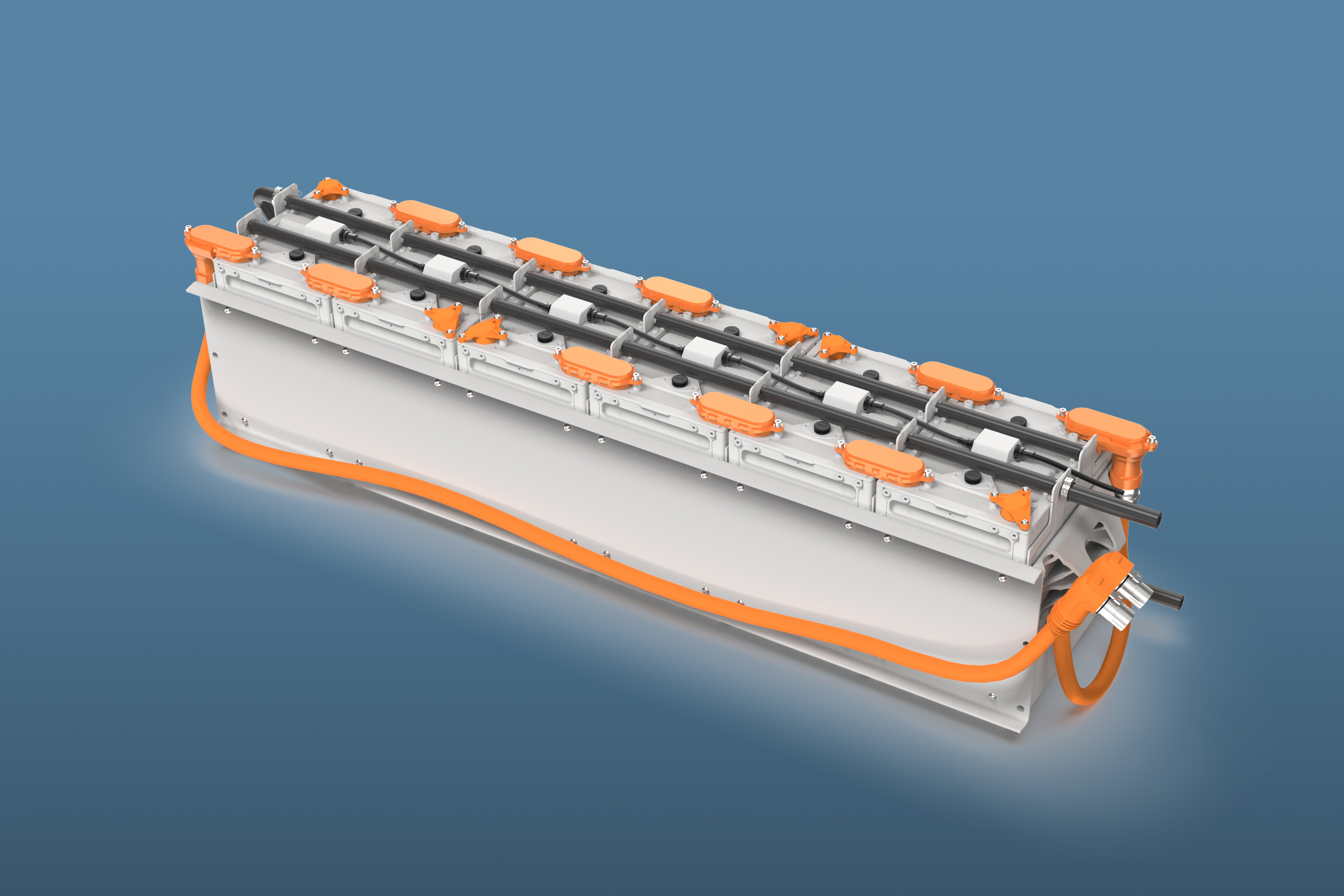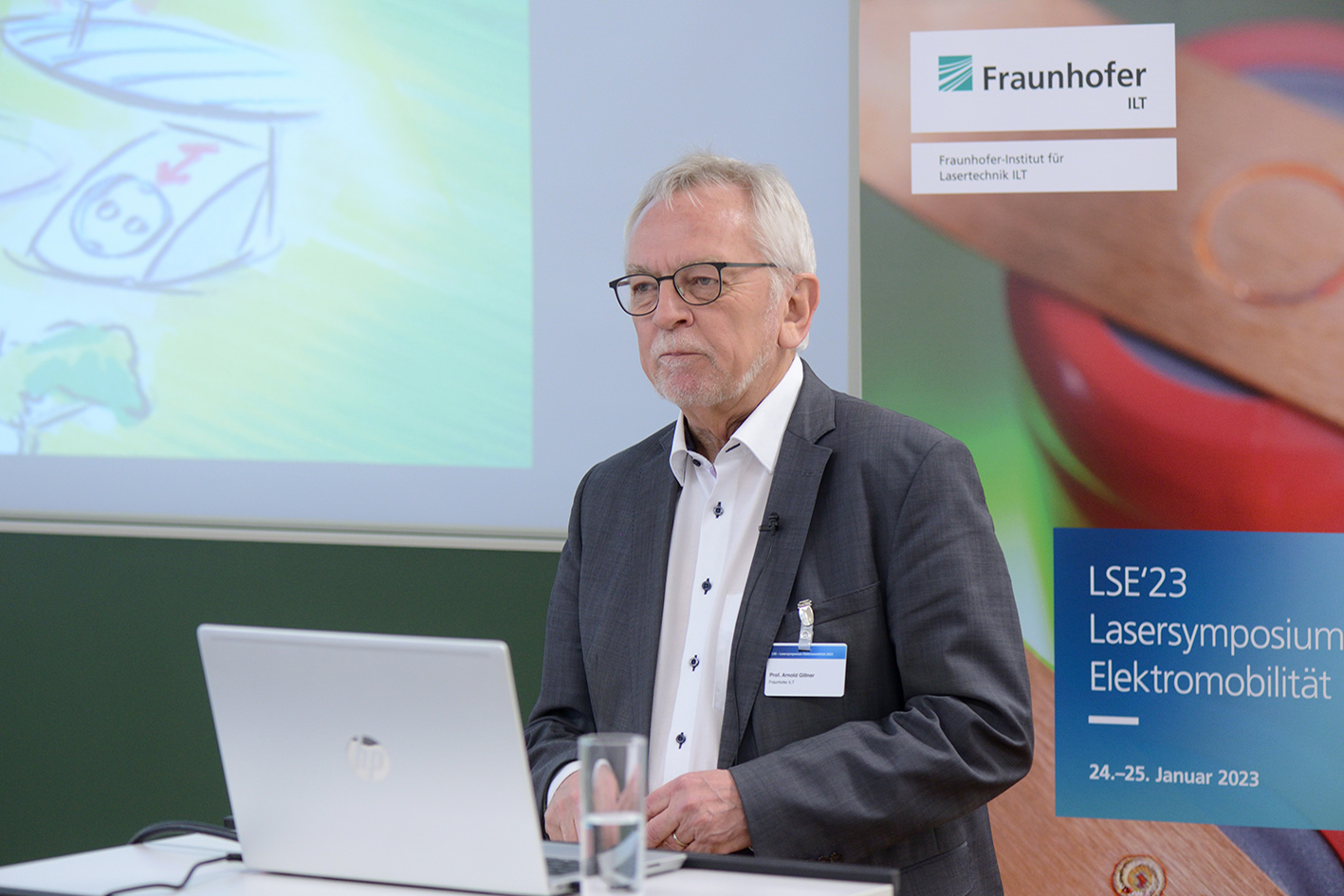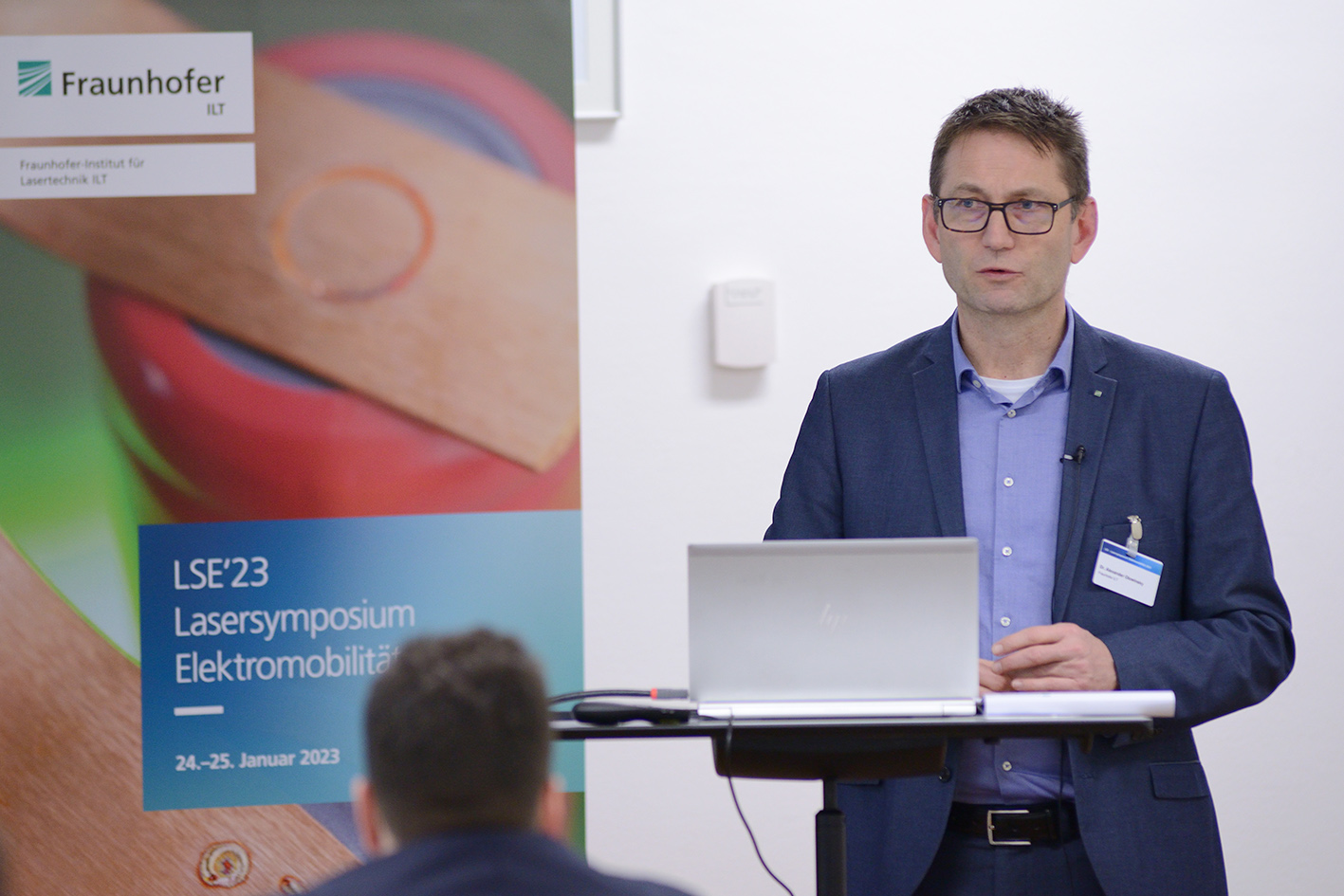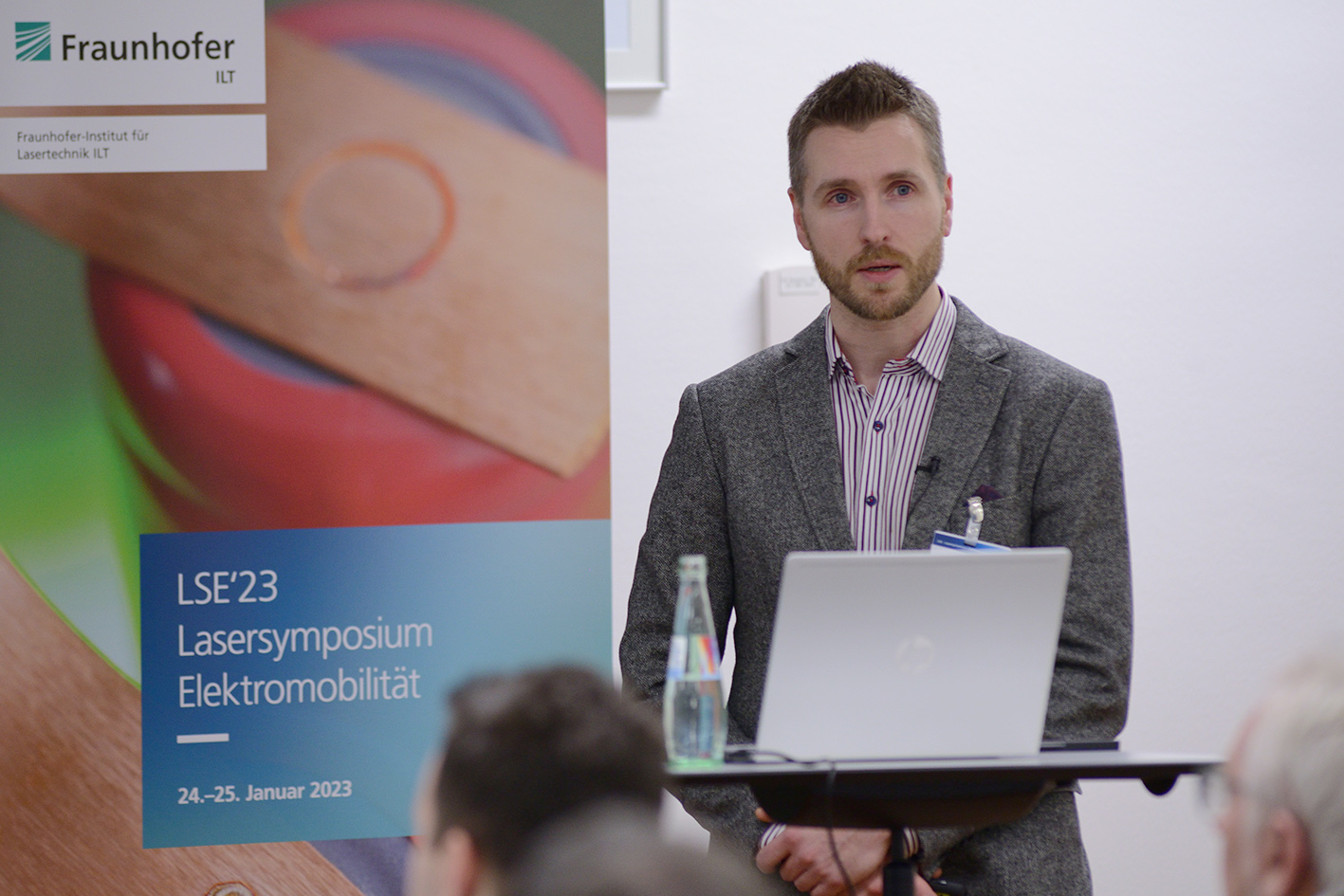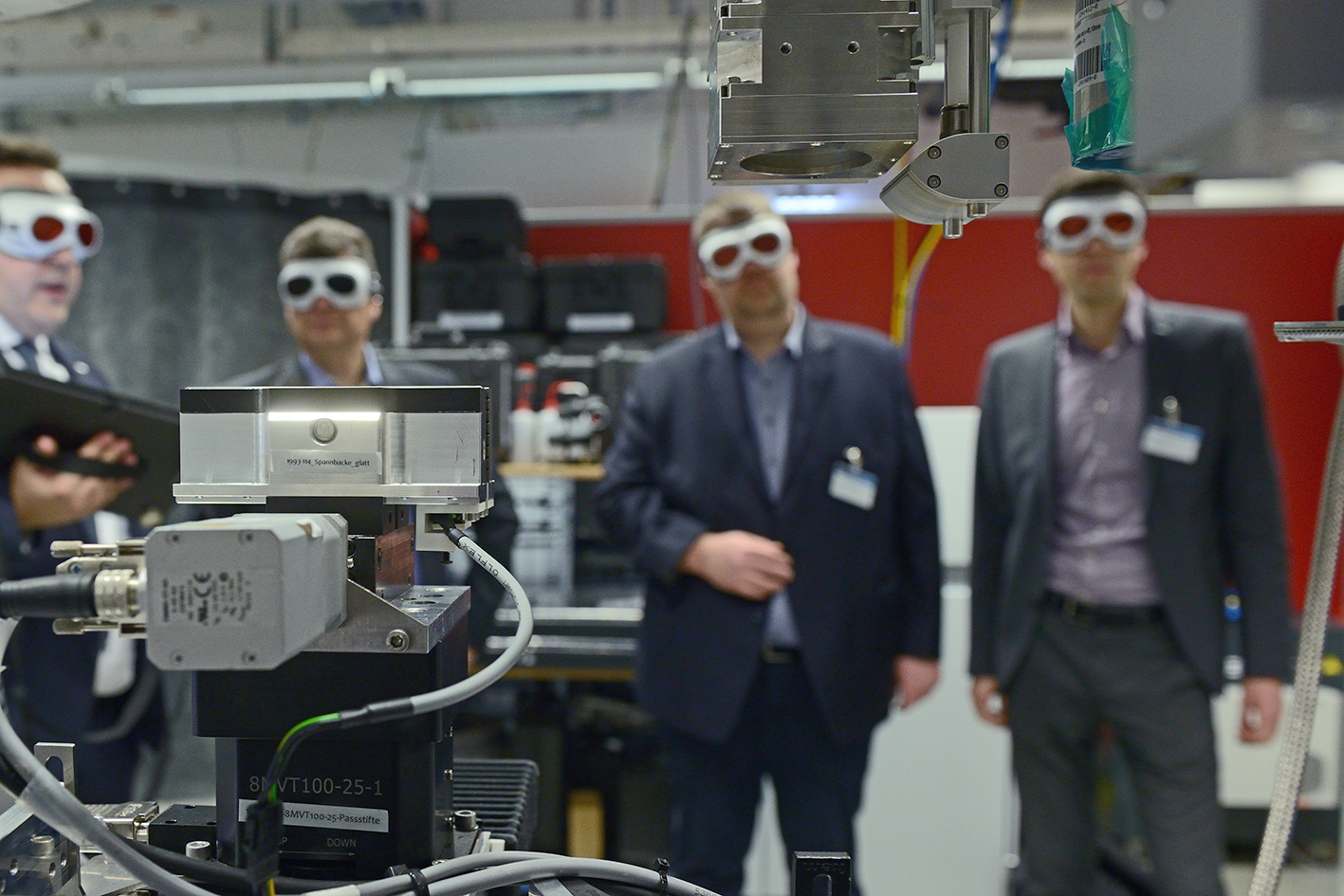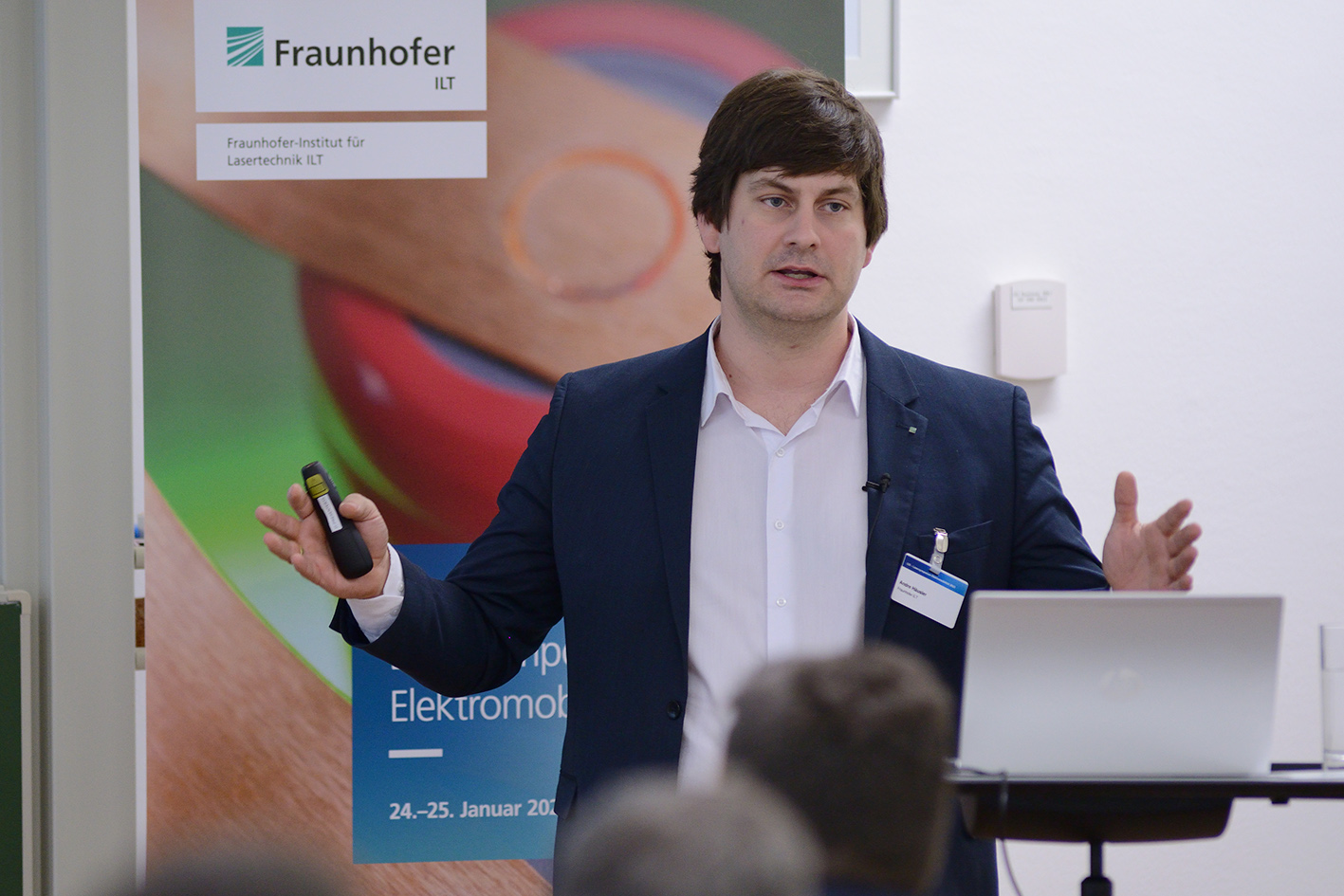OEM trend: Pouch passé?
EAS Batteries GmbH of Nordhausen, Germany, has joined forces with Fraunhofer ILT to develop a new laser welding system for joining large cylindrical lithium-ion cells for high-performance applications (40 to 50 ampere-hours). According to Managing Director Michael Deutmeyer, this new development is the Nordhausen-based company's response to a trend in the automotive industry, which is increasingly moving away from pouch cells in favor of cells with a solid outer shell due to their higher gas pressure stability and durability. Also for cylindrical energy storage systems, F & K DELVOTEC Bondtechnik GmbH from Ottobrunn has developed system technology that operates with cycle times of 0.7 seconds. Another advantage of the process developed with the Fraunhofer ILT is that it can be used for spot welding, as Bond Academy director Dr. Hans-Georg von Ribbeck emphasized.
Kautex Textron GmbH & Co. KG from Bonn has recently focused on laser welding batteries that can be charged and discharged particularly quickly without overheating thanks to thermal management. The manufacturer of plastic tanks, for example, opted for a laser welding process developed by Fraunhofer ILT for the current busbars. Development engineer Frank Süßemilch explained that, although it is more expensive than wire bonding, this process joins more precisely and faster, allows targeted process control and is suitable for large-scale production because of its low cycle times.
Efficient laser drying replaces gas-fired kiln system
In fact, lasers are constantly conquering new areas: The spectrum ranges from surface structuring with ultrashort pulse lasers (Fraunhofer ILT), completely stripping of paint from hairpins (Clean-Lasersysteme GmbH, Herzogenrath), removing cable insulation (SLCR Lasertechnik GmbH, Düren) all the way to the very current topic of drying. Currently, the pastes for anodes and cathodes have to dry in convection ovens that are around 100 meters long and have so far been heated almost exclusively with natural gas.
An alternative is being developed under the leadership of Laserline GmbH from Mülheim-Kärlich in the IDEEL research project (Implementation of Laser Drying Processes for Economical & Ecological Lithium Ion Battery Production). During tests at Fraunhofer ILT, the partners were able – for the first time – to dry the electrode paste on anodes and cathodes in a roll-to-roll process using a laser. Laserline manager Mathias Schlett presented a powerful infrared diode laser with 45 kilowatts of power at LSE'23, which is expected to significantly reduce energy consumption. Experts expect savings of 50 to 85 percent. At the same time, the lasers can double the drying speed and significantly reduce the size of the plant itself – the project participants are planning a belt speed of 30 meters per minute.
In all laser processes, it is important to have a better understanding of the processes in the melt pool, for example. Gehring Technologies monitors the laser welding of hairpins with X-rays, for example, while Semikron uses ultrasonic microscopy to inspect the laser welds in power electronics. Others rely on more elaborate methods such as optical coherence tomography (OCT). Christoph Spurk from the Chair of Laser Technology LLT at RWTH Aachen University even makes the trip to the synchrotron at the DESY research center in Hamburg twice a year to better understand laser processes.
Observing the processes is immensely important, says LSE co-initiator Olowinsky, and yet he points out that "everyone observes the process, but only a few regulate it – and if they do, then often from process to process. Multisensor applications are currently in vogue to retrieve measurement signals at many points. However, I am sure that the measurement process is secondary. What matters is the intelligent evaluation of the data."
Big Data analysis with the help of AI, final evaluation via "Human Intelligence"
Thomas Grünberger, Strategic Technology Developer at nLIGHT GmbH in Vienna, also addressed a major problem of all measurement methods: There is often an extremely large amount of data that has to be evaluated and assessed. In his presentation, Grünberger recommended analyzing big data, i.e. large volumes of data, with the help of machine learning. In doing so, users should be aware that unstable, uncontrolled processes such as the melt pool produce only unstable measurement data. Therefore, the final evaluation should always be done using human intelligence, i.e. by humans.
As the LSE organizer, Fraunhofer ILT not only provided a great deal of input on electromobility issues, but also offered small and medium-sized companies in particular decisive added value, in order words: helping them help themselves. Dr. André Häusler, for example, group leader of the Joining of Metals at Fraunhofer ILT, presented the planned Battery Launch Center NRW (BLC.nrw), which is already supported by partners such as Kuka, LBBZ or RWTH Aachen University.
Olowinsky explained the difference to the already existing Fraunhofer Research Institution for Battery Cell Production FFB in Münster: "Both institutions complement each other very well because Münster researches the process issues for battery cell production, while the BLC.nrw will develop the plant technology and the necessary know-how to produce a complete battery system from the cells." Häusler solicited support for the BLC.nrw in Geilenkirchen near Aachen, which is scheduled to go into operation soon: "We are looking for companies that offer equipment for the production of battery systems and potential users of the facility. So anyone who can provide us with plant technology or needs production or development capacity should contact us."
Fraunhofer ILT at LASER World of PHOTONICS
At the leading photonics trade fair – LASER World of PHOTONICS – in Munich, an eSled from Aurora Powertrains will be exhibited at the Fraunhofer joint booth 441 in hall A3. From June 27 to 30, 2023, experts from the Fraunhofer ILT will be available to provide information on all aspects of customer-specific laser welding systems.
 Fraunhofer Institute for Laser Technology ILT
Fraunhofer Institute for Laser Technology ILT